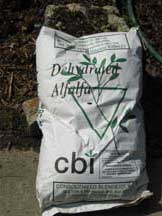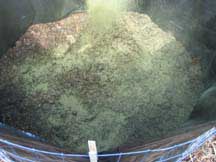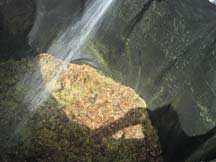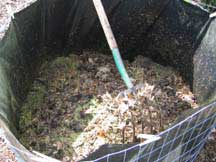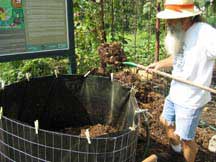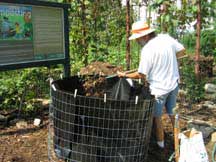
How to Compost, in Pictures
from Heartland All Species Project, Kansas City, MO USA
Compost Workshop, Sept 18, 2005, Tracy Gardens
Composting, the natural breakdown of dead plant and animal tissues into soil, is one of the easiest, most natural processes there is. It has been going on without human help for millions of years. Compost Recipe
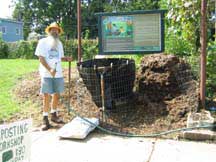 |
You’ll need a fork, ground alfalfa fertilizer*, plastic liner, leaves, 12.5 ft of 2X4 welded wire fencing per bin, a hose with sprayer, leaves, air, and a smile about the fun and exercise that you are about to get. *Alfalfa fertilizer is not essential, it is a "secret" ingredient that makes the process go faster. |
|
Choose a location where you will have room to work and move the bin around so you can refill it. When you get the wire fencing from the hardware store ask them to leave the wires "long" on one end - bend these wire tabs as hooks to hold the ends of the fencing together in a circle. |
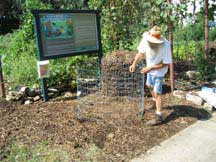 |
|
|
||
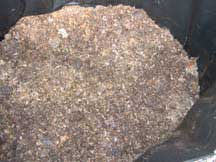 |
Fork a layer of leaves into the bottom of the wire bin. |
||||
|
|
|
|
|
The idea is to supply enough moisture to the composting organisms so they can break down the materials, but not a flood that would force out the oxygen. |
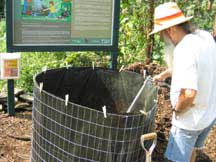 |
|
|
||||
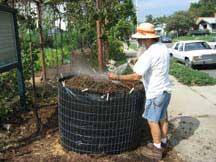 |
...until the bin |
|
After 5-7 days it is time to move the stack to reintroduce oxygen into the pile. If the organisms run out of oxygen, the composting process slows way down. Turning the pile reintroduces oxygen and speeds up the process. It's easy to just unhook the ends of the wire, reestablish the bin immediately next to the stack of composting leaves and fork the old stack of leaves into the now empty bin, watering as necessary. Backyard composting is a great way to conserve the energy it takes to haul your yard trimmings away. You can then spread the finish product on the soil to make it richer in organic matter. Partial funding provided by MARC Solid Waste Management District and MDNR. |
Go to Compost Learning Guide for more composting tips.
For more about using alfalfa fertilizer in your compost pile.

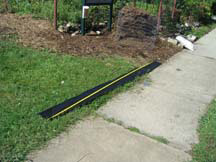
 Fasten the plastic sheeting to the top of the compost bin with cloths pins.
Fasten the plastic sheeting to the top of the compost bin with cloths pins. 